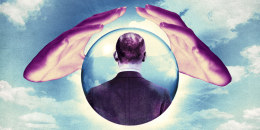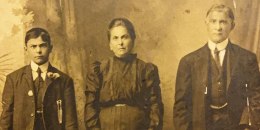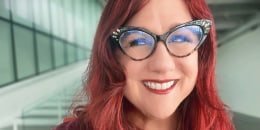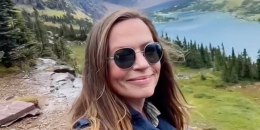I first heard about the Great American Eclipse from my now husband, Dave, three years ago. He told me he was absolutely, without a doubt going to see the eclipse in 2024, because the last one had changed his life.
He described what really happened once the moon fully blocked the sun’s light back in 2017: The sky grew dark. The air cold. To him, it felt like being on another planet entirely. While he stood there in a field in rural Tennessee, the strangers around him began to cheer. “It’s like, you’re not even human anymore,” he said about witnessing totality firsthand.
Eclipse comes from the Greek word for “abandonment,” because for a few minutes, it’s as if the sun leaves us, and something strange and magical takes its place.
Dave's experience lasted for about two minutes before life returned to normal — but onlookers everywhere felt like they had been changed for good. They were aware of having passed through a once-in-a-lifetime experience. Actually, a once-in-a-universe one.
One that I, stupidly, missed out on because I was too cheap to pay for an overpriced flight to Greenville, South Carolina, and too nervous to take yet another day off from my first job. Seeing that 2017 partial eclipse from downtown Manhattan, I realized that my human concerns got in the way of a celestial breakthrough. After that very human error, I vowed I would see an eclipse eventually. Next time, I would get my chance in 2024.
The eclipse on April 8 was notable for a few reasons. For one, it cut across many major metropolitan areas, from Mazatlan, Texas through Dallas, all the way up to Maine and Montreal. Timing matters, too: This eclipse hit North America on a day with clear weather and it’s the last one the contiguous U.S. will see until 2043.
This eclipse stands to be an even more powerful experience than the last. “This one will be even longer, with more than four minutes of darkness along much of the path of totality,” said Catherine Pilachowski, the Kirkwood Chair in Astronomy at Indiana University Bloomington.
“A total eclipse is a deeply moving experience — it's a sense of connection to nature, to the universe, in a way we don’t often experience,” she said, echoing Dave’s words.
But what is an eclipse, and why is this one special enough to send millions in search of a few minutes in the dark?
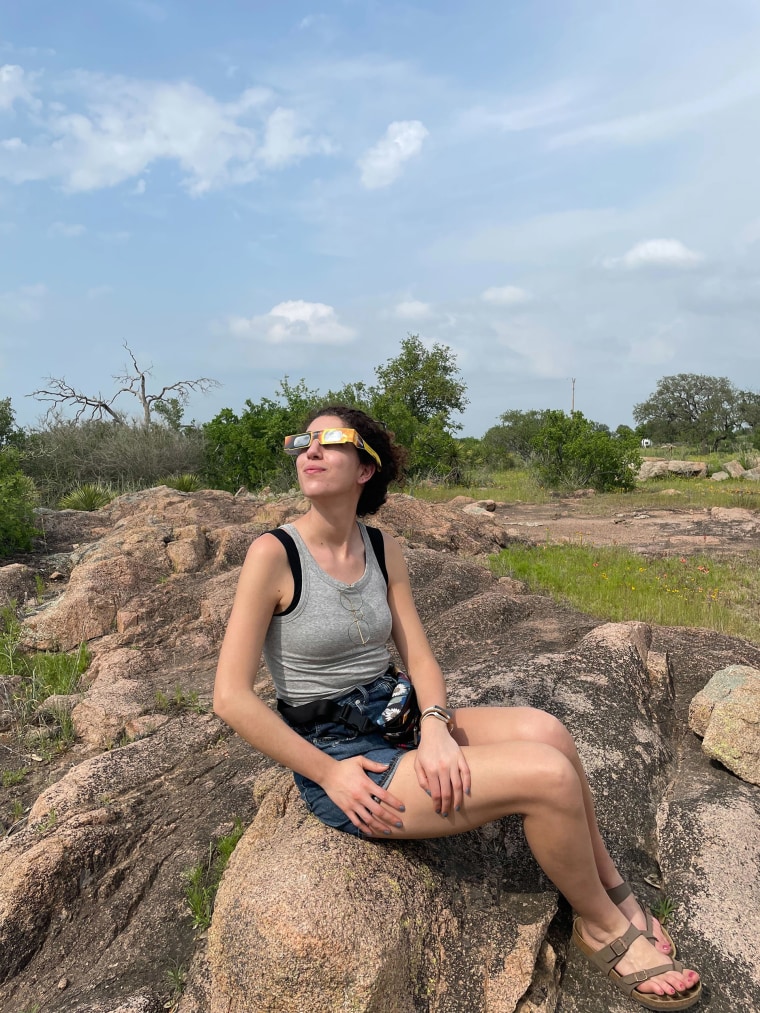
“Eclipses occur when the moon and sun appear to be the same size and line up in the sky,” Dr. Anita Cochran of UT Austin said. The alignment of the sun, earth and moon is a “complex dance,” she said, given their elliptical patterns. Actual eclipses aren’t uncommon and occur multiple times a year, though solar eclipses happen less frequently. The trouble is that most eclipses occur over the ocean and their paths of totality are very small.“You get really lucky when you get into the path,” Cochran said of the small but populous swath of America that will have front-row seats to the show.
Astrologer Lisa Stardust has a different take. She warns that astrologers recommend staying far away from the path of totality, since “eclipses can bring intense emotions and secrets to the surface, causing people to act out or behave unpredictably.”
I decided that was a risk I would take, which was good, because Dave and I planned to travel to the epicenter of it all: Texas. Historically, Texas is the state along the eclipse path with the lowest cloud cover this time of year. Because of the weather conditions, an estimated 1.1 million people would travel the state to view the eclipse.
John Beckman, who traveled to Montana to witness the eclipse in 2017, drove across the country from California to Texas this year to meet a group of 20 family members and friends.
“It’s really hard to get through to people that you’re going cross country for three minutes (of eclipse),” he said.
A whole year prior to the eclipse, we solidified our plan to hit the road. We would meet up with Dave's cousins, who live in Austin, and drive to a camp site in Llano, Texas, right at the center of the eclipse path. There, over 120 people from around the wold — from Melbourne to Colorado — would convene to witness the cosmic event together.
In the months leading up to April 8, we met the fellow travelers on Zoom calls. We learned who would be bringing telescopes and tents, and signed up for potlucks and Peruvian fire rituals (yes, really).
Meanwhile, the people of Llano, Texas — a town of 2,000 — prepared for an influx of eclipse chasers just like us. Michelle Long Hagli, the owner of Brown Chicken Brown Cow Ranch, warned us to have supplies. At times, I couldn’t tell if we were preparing for a natural phenomenon or disaster.
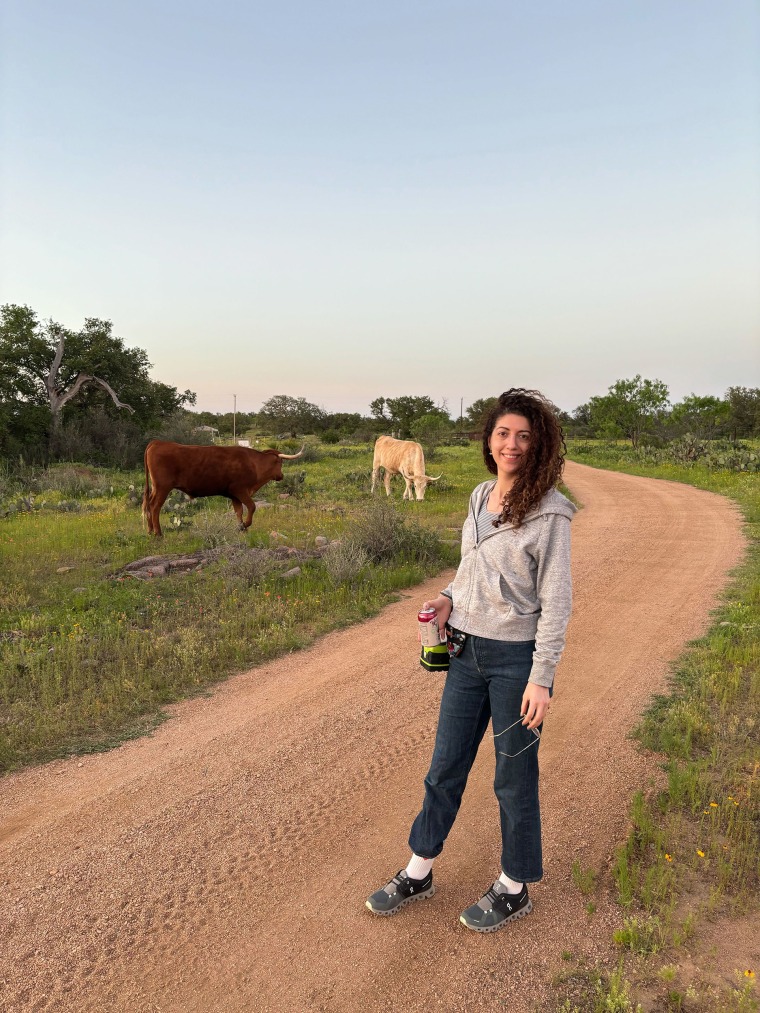
Public notes from the mayor of Llano seemed to take on the same tone of resignation and anticipation as Michelle. She advised townspeople to have “two weeks of supplies” secured by April 1, and put it this way in a poetic Facebook post to her constituents: “We could not stop this wave of eclipse watchers from coming here to Llano even if we wanted to, so we will make the best of it. And even though it will be a boost for the economy, it will be like trying to get a drink out of a fire hose.”Diana Stewart, a Llanite who owns a local tamale business, said, days before the eclipse, “We’re not sure what to expect. We don’t know if we should prepare for the masses, or if it will be similar to a Christmas holiday.” She adds generally, she and her neighbors are “excited,” saying, “We think this will be a great time to show everyone how beautiful and unique our little town is.”
As we prepared (and as I watched airfare rates nearly triple) I started to relax and dream of totality in a small Texas town.
Last eclipse, I was so worried with my human concerns I missed out on something great. This eclipse, I was so sure of my human plans that I forgot about the other key player: The sky. It turns out that weather doesn't care for even the best-laid plans.
The weekend before the eclipse, I began to panic at the sight of the weather forecast. Clouds. I studied the forecast so much, I felt like I had accrued enough credits for a meteorology minor. I learned the difference between cloud types: High, cirrus clouds were good; it meant the sun could poke through. Cumulus clouds, which cover the sky like a blanket, foretold total eclipse doom. Still, as I looked at chart after chart, it felt a bit like reading tea leaves. How were we to know until Monday at 1:35 CT?
Dave, forever calm, kept telling me to close the computer and my multiple browser tabs for “Texas weather eclipse.”
All the local Texans I spoke to, including our family, said not to bother: Texas weather changes on a dime. Still, I wanted certainty that this trip would be worth the trek.
Looking at cloud cover blanketing Texas, I entertained canceling the whole trip and going to Alexandria Bay, New York, where the forecast appeared to be clearer. There, I could watch the eclipse on the St. Lawrence River.
But Dave and had a plan, and we would stick to it, whether or not we had a pact with the sky.
Our flight to Austin from Newark on April 6 was nearly full. Just before takeoff, the flight attendant got on the loudspeaker and asked, “How many of you are going to see the eclipse?” Passengers cheered as if it were a sporting event, myself included.
While boarding the plane, I realized this trip, and the weather, hadn’t just consumed me — it had consumed nearly everyone else as well.
A family of five boarded ahead of us. The dad, wide-eyed, said his friends told him about the 2017 eclipse, and he couldn’t miss out on this one, so he was bringing the whole family along. His son chimed in saying it was going to be cloudy, but they all seemed determined to have a good time despite the weather.
One of the sons chimed in with “Spain 2026.” It was an invocation I heard often on my eclipse Facebook groups, calling to the next visible total solar eclipse. As if to say: we might not have Texas, but we’ll always have Spain.
I asked a woman ahead of me if she was traveling to see the eclipse. “More like not going to see it,” she said. She went on to compare the eclipse to her wedding night: “Dark and cloudy.”
The flight attendant warned me as I left. She said her friend was from Llano, where we were headed — and that it was going to be mobbed. I decided not to text my mom that.
Once we landed in Austin, Dave’s cousin, Brian, and his partner Erika picked us up from the airport. On Sunday morning, we left for the campsite. Michelle Long Hagli, who bought the land with her husband after the pandemic, greeted us with a huge hello, wearing the eclipse shirts she had designed for the occasion. On it was a brown chicken and a cow donning eclipse glasses.
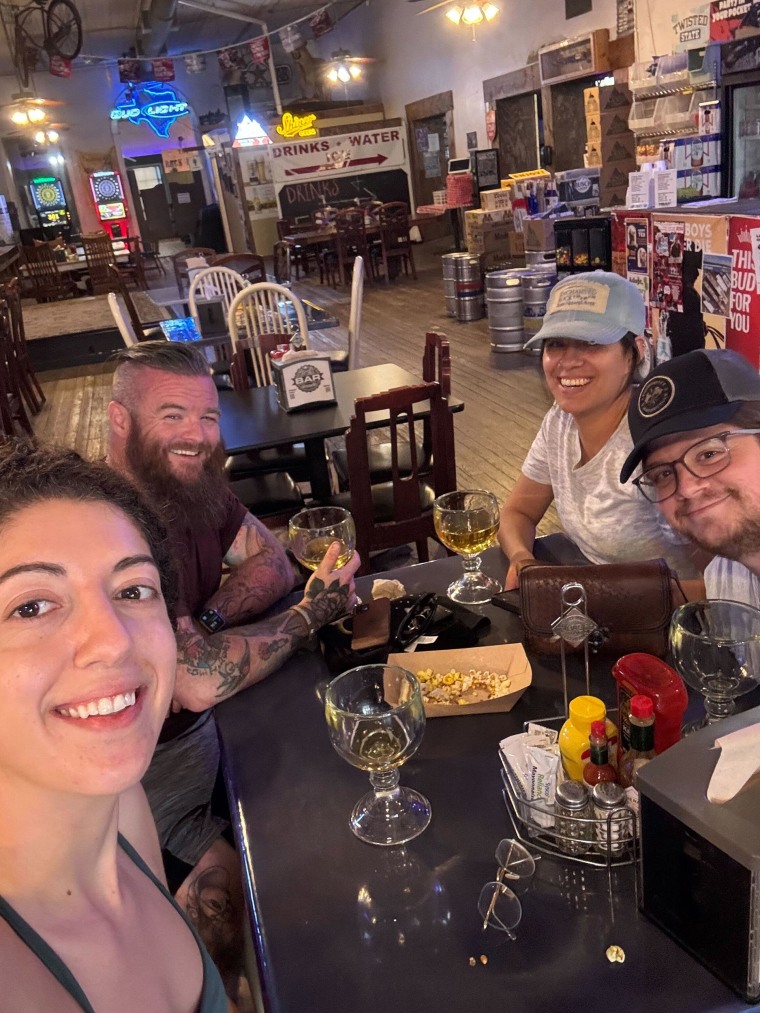
My first impression of Brown Chicken Brown Cow Ranch is that it smells much better than I thought a ranch ever could. The bluebonnets has blossomed, and so did a sense of excitement among everyone we passed. What followed was a slideshow of Texas’ greatest hits: We ate barbecue from Cooper’s, went to a big, empty bar in downtown Llano, met four longhorn cows and hiked Enchanted Rock. Yes, it was enchanted (and also steep). By night, we could see the stars. The evening before the eclipse, we woke up in the dark to a clear night sky.
The next day, those skies had changed to gray. Still, Michelle was cheery when I asked if she ever worried about the weather. She said at 56, she had lived long enough to stop worrying about things out of her control. Anyway, she said, “it was all a gift from God.”
By then, I was so happy in the Texas landscape that I started to believe she was right.
We had pancakes, then we participated in a ritual meant to situate ourselves as one with the planet, harness the manifesting powers of the eclipse and release baggage, guided by healers Woody Strickland and Kay Jantzen. Obviously, I prayed for a clear sky. As we were directed us to pray toward the sun, the sun suddenly broke through the clouds.
Then came the crucial decision that would determine our entire eclipse experience: The question of whether to stay put or go elsewhere. To play the cards we had, or drive until we found a better deck.
Dave, who reads weather maps for fun, made the call. We would go west for an hour where it seemed less cloudy — 25% coverage to Llano’s 75% — and totality still stretched for over three minutes.
Still, I was worried. What if we left, and the conditions were clearer back at BCBC Ranch? What if we encountered traffic and missed it all? I thanked myself for marrying someone so decisive. Dave dismissed my worries and we hit the road.
We took a nearly empty stretch of Road 171 westward toward Brady, before stopping in the small community of Voca. The only structure we could see was a vineyard (closed) and a post office (also closed). The post office parking lot was filled with about 10 cars and plenty telescopes — it was clear that others were waiting in anticipation.
We parked and set up our chairs in a field of bluebonnets. Together, all us strangers waited patiently. Many had waiting for years, but the last few minutes leading up to the eclipse felt the longest.
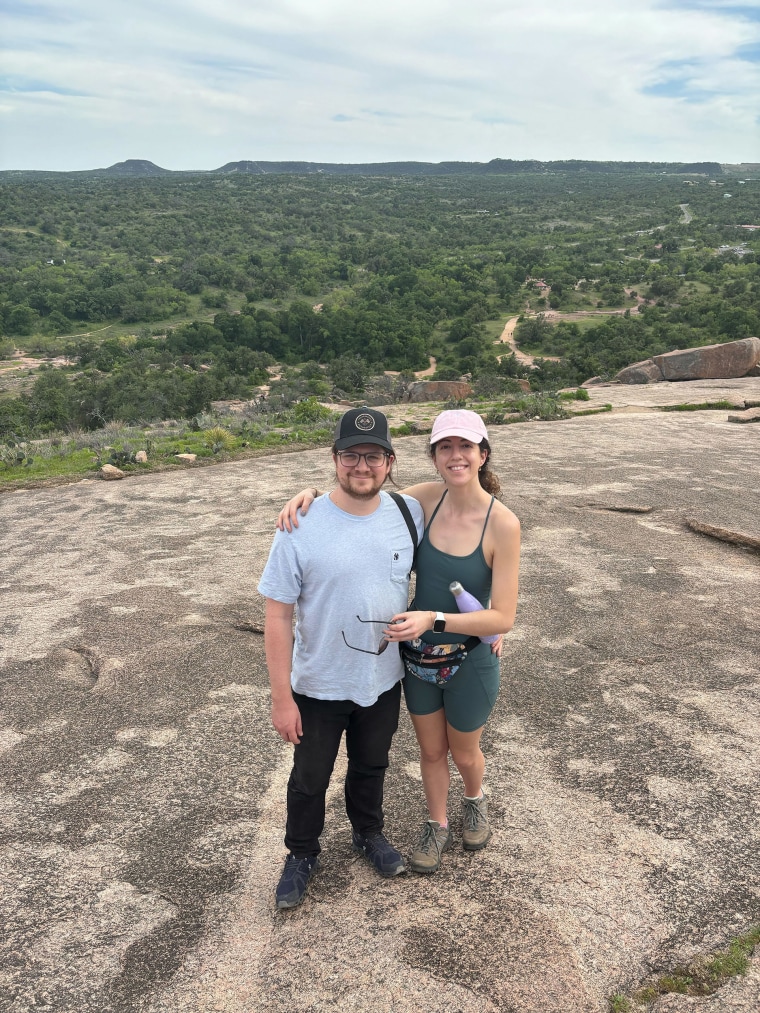
The other onlookers were seemingly in this tiny town on accident. Vice, Texas (population: 50), was not the plan, but the travelers I met and spoke to had made the same calculations that Dave and I had. All except Shirlene Miller, the woman whose field we congregated next to. She moved to Voca for her husband, who was born and raised there. At 84, she told me this was her last chance at an eclipse. I hoped the clouds would clear for her. And, ok, for me, too.The moon started its journey into the sun’s path at 12:15 and would reach totality at 1:35. I felt like I was at a championship game and the teams were tied, only there was no coaching, no reason, nothing that could be done. Low clouds started to gather. For about 15 minutes, the sun was gone.
Then, like some sort of cosmic red carpet, a pathway opened between the clouds. It looked like a path made for the sun to travel — and travel it did. We all looked up, glasses on. Everything but the sun was dark. We watched as the sun went from a crescent to a sliver. Then, it was gone.
I took off my glasses and saw it: totality. The moon blocking the sun. This is what no one else could see outside the path of totality.
Here is where I get to the part that's almost impossible to express. Now that I've experienced a total solar eclipse, I know that no video, photo or description will do it justice.
The best thing I can say is to travel in 2026 to see the next total eclipse yourself. All words and video will fail you in the meantime.
Because you’re curious, I’ll try my best to describe the experience. It is like a third sun or moon you never knew before coming out to introduce itself, and you wondered how you missed it this whole time. It’s like the eye of God coming out to blink. It’s like the clock turning to 1/1/2000 and standing in a crowd, trying to make sense of time and the universe and our place in it. It’s feeling that not only are the sun, moon and earth aligned but somehow, you are too.
It was enough to make me literally fall to my knees.
This is actually what happened. The moon covered the sun and the world grew dark. Venus and Mercury were visible in the dusk-like sky. People cheered and shouted (fine, people being me). Simply put, it was so incredibly cool.
Perhaps Brian put it best when he said, “I get why people 1000 years ago were terrified. It gets dark out, and you look up and there’s a black circle?”
Then it was over, the vista was gone. I put my eclipse glasses back on, and realized I couldn’t get back that magical moment if I tried. If I tried, I'd quite literally go blind.
The sky lightened. The birds began chirping again — I didn’t realize how silent it had become. We all looked back at each other in awe.
We did it. With plenty of planning and a lot of luck, we actually accomplished what we had come to Texas to see.
I’m still processing the eclipse and processing the lessons it has for me. Is there a way to make sense of luck? Does it just happen? Or does luck happen by putting yourself in its path, and making sure you’re looking up, ready to marvel at whatever comes your way?
I do know this; I got lucky, and it’s only because I didn’t get in the way of myself. I surrendered to the day — and to Dave — who never worried.
The truth is my worries never mattered. They never had any sway over the clouds. No matter what happened, I was lucky to come along for the ride — lucky for another day under this sun.
My sense of awe and luck was shared with Jay Lawson, an amateur astronomer at the Brown Chicken Brown Cow Ranch, who wore a shirt emblazoned with four eclipses he has seen from 1979 to 2024. It turns out that totality was visible for only 90 seconds at BCBC ranch, but it was still something.
“You plan for years, and it’s done in a few seconds. And all you can think is, ‘When can I see another?’” Lawson said, taking the words right out of my mouth.
It goes without saying: Spain 2026! Dave and I hope to see you there.



